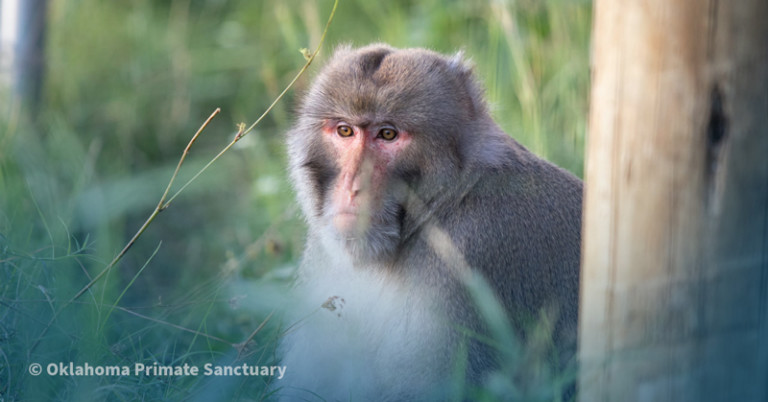AAVS News
October 7, 2021
Tell Congress:
NIH Bias Keeps Chimpanzees from Sanctuary!
Despite many years of funding experiments and causing untold suffering, the National Institutes of Health (NIH) is once again denying sanctuary to chimpanzees who have been retired from research but still remain in laboratories. On September 29, after two years of review, NIH announced that 49 (or as many as 51) chimpanzees living at the Keeling Center for Comparative Medicine and Research in Texas will not be moved to the world’s largest chimpanzee sanctuary, Chimp Haven, claiming that transport “may be unsafe.” Similarly, two years ago, NIH made the decision to not relocate over 40 chimpanzees who have been languishing at the Alamogordo Primate Facility (APF) in New Mexico for decades.
After all they’ve been through, these chimpanzees deserve a chance for a natural life!
According to an NIH release, the agency applied the same “standard criteria” that was used to evaluate the health of the chimpanzees at APF. This criteria, however, does not include consideration of how living in a sanctuary environment can benefit these chimpanzees. Additionally, a so-called “independent panel of veterinarians,” employed by NIH, was relied upon to evaluate the health records of chimpanzees who the lab labeled unfit for relocation. While the panel did consult with some outside experts, it did not include discussion with ethicists, who could more objectively weigh the potential benefits and costs of relocating the chimps. It’s not surprising that, in both circumstances, the panel of NIH veterinarians agreed with the laboratories that the chimps should not be moved. This also will allow these labs to continue receiving NIH financial support for the chimpanzees.
Caring for hundreds of chimpanzees formerly used in research, Chimp Haven has the expertise to meet the special needs of these animals. Chimp Haven explains: “we’ve seen the health and behavior of many chimpanzees improve, including those who are geriatric, fragile, and came to the sanctuary socially challenged. We firmly believe sanctuary life is the best place for chimpanzees formerly used in biomedical research.”
The path to chimpanzee retirement is not over until every chimp is in a sanctuary. Contact your legislators and urge them to demand that NIH relocate ALL retired chimpanzees to the Chimp Haven sanctuary.
Other News

READ MORE »
READ MORE »
READ MORE »
Sanctuary Moment
Oklahoma Primate Sanctuary
Wallace, the Alpha
Many primate species who live in troops in the wild have a leader, oftentimes referred to as the alpha, the highest ranking group member. Although Wallace spent the first part of his life in a laboratory, upon arriving to the Oklahoma Primate Sanctuary (OPS) four years ago, he quickly emerged as the alpha of his family group of five male rhesus macaques, all retired from research. According to the folks at OPS, Wallace is an outstanding leader and is quick to resolve any disagreements that may occur between his friends. Great job, Wallace!
We’re so happy that Wallace and his group mates can exhibit many of their natural social behaviors at OPS. In a laboratory setting, primates cannot often exhibit their normal, wild behavior or engage in a lot of social interaction. Caring for over 100 primates, including many who were once used in research, Oklahoma Primate Sanctuary has enjoyed generous support from AAVS. If you’d like to see more of Wallace and the other primates at OPS, check out their social media!





39 Responses